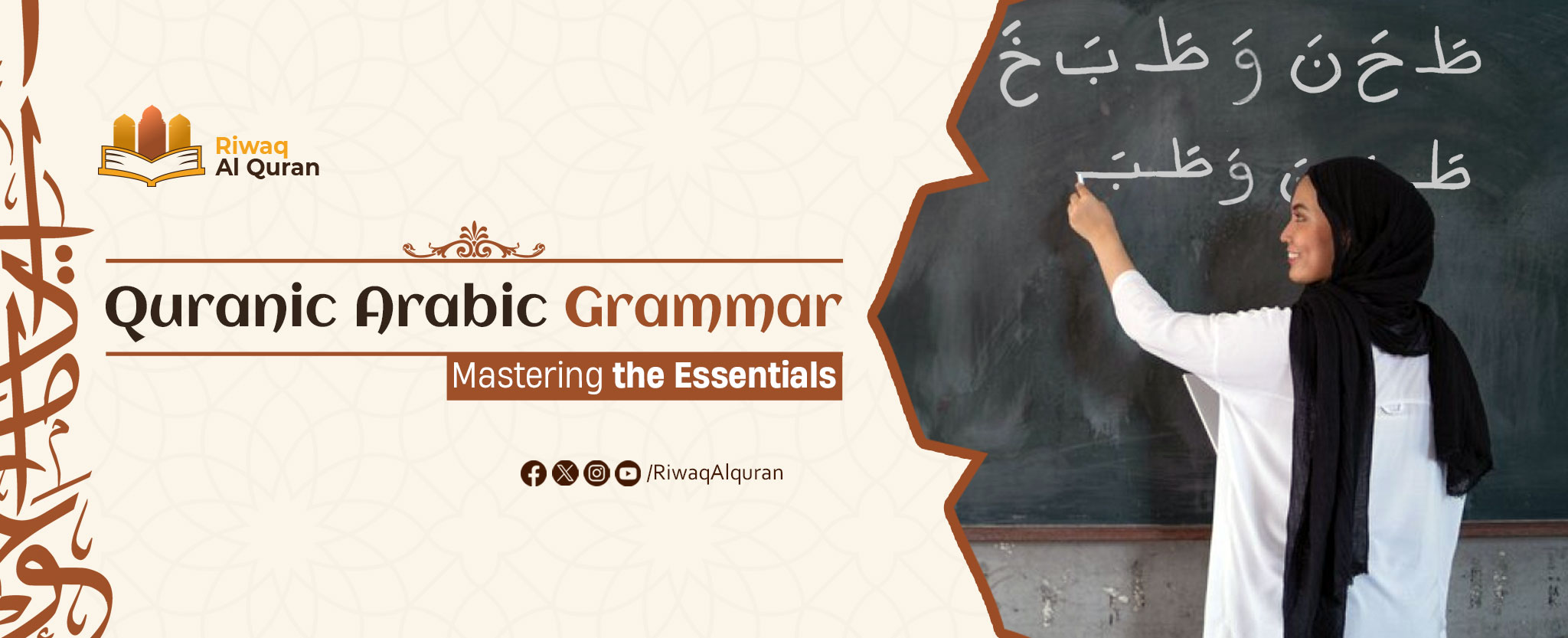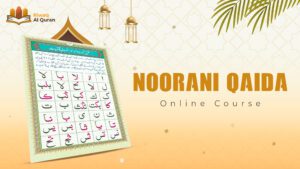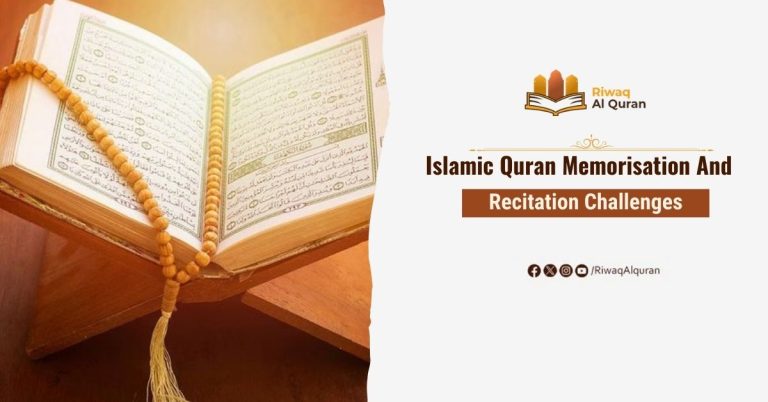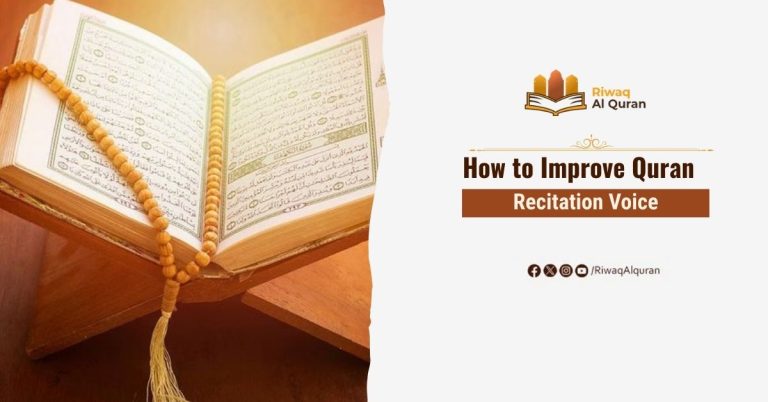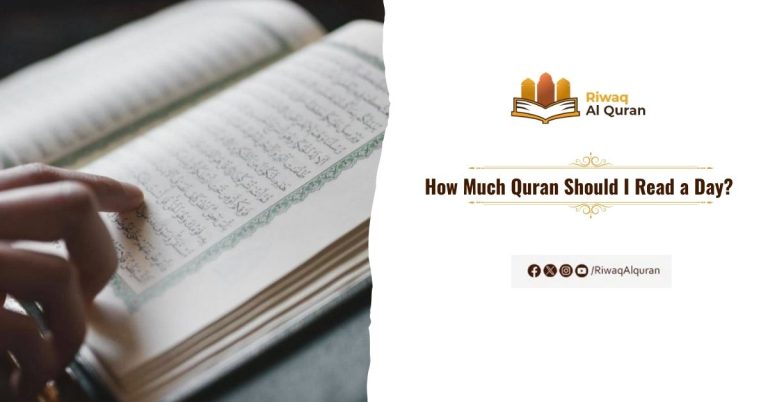Quranic Arabic grammar, known as “Nahw,” provides essential rules for constructing correct and meaningful sentences by focusing on word types (Ism, Feil, Harf) and sentence structure. Mastering Quranic Arabic grammar enhances understanding of syntax, semantics, and the Quranic text, making it crucial for accurate interpretation and fluency in the language.
Do you want to connect deeply with Allah? Learning Quranic Arabic grammar is the key. It will help you understand the hidden meanings and beautiful messages in the Holy Quran. While there are many ways to read the Quran in English, still, there is absolutely no replacement for reading and learning the Quran in its original language.
Table of Contents
Quran And Arabic
The Holy Quran is our resource for the Arabic language, so by learning the Quranic Arabic grammar, you open yourself to endless opportunities to connect with the Arabic language in general which will allow you to learn Islamic studies in every aspect possible.
Let me break it down to you from scratch to make it easier for you to understand the basics of Quranic Arabic grammar. Whether you’re just starting out or already familiar with the Arabic language, this article will guide you through how to learn Quranic Arabic grammar and why learning the Quranic Arabic grammar is good for you. Also, we will explain the historical background behind the Arabic grammar in Islam and finally What are the key grammatical lessons you should learn to simplify Quranic Arabic for you.
What is Nahw?
Nahw (نحو), Is Arabic grammar which basically means the ‘way’ or ‘manner’ of speaking, It is all about how native Arabic speakers naturally use their language. It’s one of the oldest fields of study developed by Muslims, But it is still used to this day in Modern Standard Arabic and it’s said to have started with Abul Aswad al-Duali, who put together the rules of Arabic grammar when Ali Ibn Abi Taleb (God bless him) asked him to.
But it was Al-Sibawayh’s book, ‘Kitab fil-naḥw,’ that became the go-to guide for Arabic grammar.
Arabic grammar has two main parts: ‘ṣarf’ or ‘taṣrīf,’ which is about conjugating verbs (changing them to show who’s doing the action and when), and ‘naḥw’ or ‘i’rāb,’ which looks at how words change their endings and how they fit together in sentences.
Interestingly, there were two famous schools of grammar, one in Baghdad and one in Basra, and they had some different ideas about Arabic syntax (sentence structure), semantics (word meanings), and the philosophy of language.
What is Quranic Arabic Grammar?
Quranic Arabic grammar, known as “Nahw,” is like a set of guidelines for building sentences in Arabic. It shows us how to put words together correctly, change their forms to express different ideas, and make sure everything fits perfectly to create clear and meaningful sentences. Think of it as a blueprint for constructing beautiful and accurate Arabic communication.
Basically, Arabic grammar is all about the types of The Word or as we say in Arabic “ Al Kalima”
The word in Arabic has three types “Ism, Fei’l, and Harf” We will go through all of them together during this article.
How can learning Quranic Arabic Grammar enhance your Arabic Skills?
Quranic Arabic grammar is the backbone of the beautiful Arabic language. It’s the set of rules and structures that show us how to form words, put them together in sentences, and use them correctly. Riwaq Al Quran’s Online Arabic Grammar Course is your chance to explore this amazing world and understand how this beautiful language works!

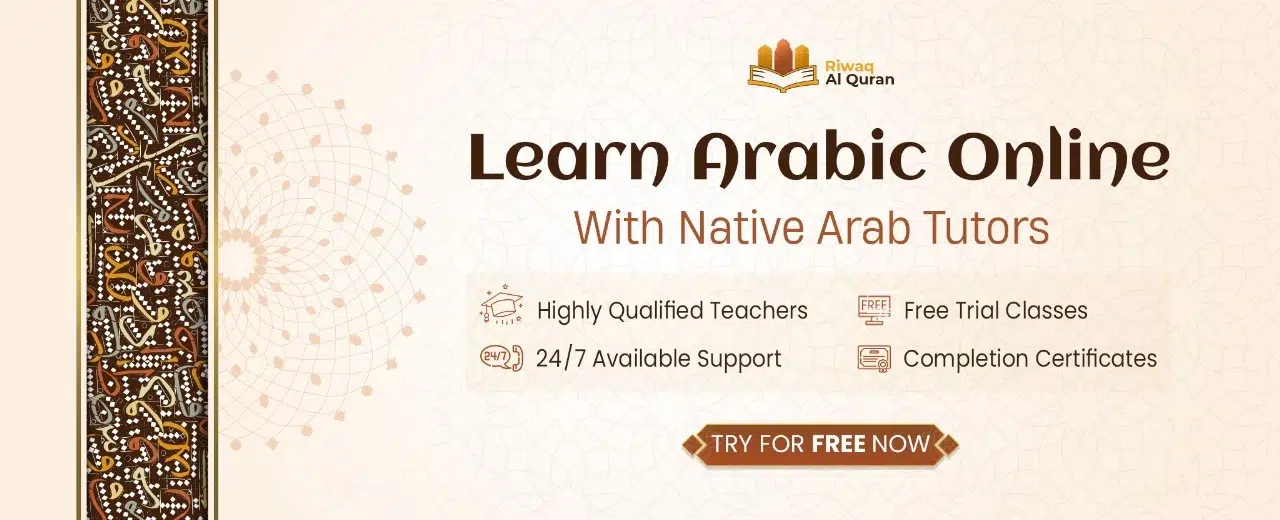
Lessons of the Quranic Arabic Grammar:
Embarking on your journey of learning about Quranic Arabic grammar, you need to know the important lessons that you will have to study in order to be able to understand Arabic grammar in general and Quranic Arabic particularly.
Let’s tackle the important topics that will be covered in Riwaq Al Quran’s online Quranic Arabic grammar course
1. Harakat in Quranic Arabic Grammar
When you start to learn Arabic grammar, It’s essential to learn the Harakat first which is marks above and under the Arabic letters which will indicate how exactly you should pronounce a specific word.
Types of Harakat :
1. Fatha (َ)
It’s more like a short “a” sound similar to the “u” in “cut” or the “a” in “cat”
Example:
كَتب
The first letter of this word is pronounced as “Ka”, as it has a Fatha.
2. Kasra (ِ)
Kasra is more like a short “i” sound. It’s similar to the “i” sound in “bit” or “pin”
Example:
كِتاب
The first letter of this word is pronounced as “Ki”, as it has a Kasra.
3. Damma (ُ)
Damma is like a short “u” sound, It’s similar to the “u” in “put” or the “o” in “book”.
Example:
كُتب
The first letter of this word is pronounced as “Ku”, as it has a Damma.
2. The word types
A word is a language unit that carries meaning and can stand alone. In Arabic, this is often expressed as “كلمة” (kalima).
The word in Arabic can either be nouns (Ism- اسم), verbs (Fe’l – فِعْل), and Partical (Harf – حرف). We will dive deep into the definition of these three too.
3. The basic nominal sentence In Quranic Arabic:
The basic Arabic nominal sentence in Arabic grammar consists of two parts: The subject also called the topic (مبتدأ Mubtad’a) and the predicate (Al Khabar الخبر)
Let’s take a look at a simple example:
| The predicate (Al Khabar الخبر) | The topic ( Mubtad’a المبتدأ) | Nominal sentence |
| واسع (Spacious) | المنزل (The house) | “المنزل واسع” (The house is spacious) |
| جديدة (New) | السيارة (The car) | “السيارة جديدة” (The car is new) |
A. Nouns: The Cornerstone of Nominal Syntax
Nouns are the heart of nominal syntax. They represent people, places, things, or ideas. In Arabic, nouns can take various forms, each with its unique grammatical implications:
| Example | Definition | Nouns |
| كتاب (book), شجرة (tree), قلم (pen) | These refer to one person, place, thing, or idea. | Singular Nouns |
| كتابانِ (two books), شجرتانِ (two trees), قلمانِ | These indicate two people, places, things, or ideas. | Dual Nouns |
| كتب (books), أشجار (trees), أقلام (pens) | These indicate more than two people, places, things, or ideas. | Plural Nouns |
B. Prepositions: Connecting Nouns and Other Elements
Prepositions play a crucial role in connecting nouns to other words in a sentence. They help show relationships such as location, time, and possession. Arabic has a diverse range of prepositions, each with its unique meaning and role in grammar.
Let’s take a look at the most common 10 prepositions in Arabic:
| English meaning | Arabic prepositions | Example in Arabic | Example in English |
| Some of / From | مِــن | أنا من مصر | I’m from Egypt |
| To or At | إلى | ذهبت إلى منزلي | I went to my house |
| About | عـَـن | سألت عنك | I asked about you |
| On or Above | على | الكتاب على الطاولة | The book is on the table |
| In or Into | في | القطة في الصندوق | لThe cat is in the box |
| By, With, In or At | بِ | كتبت بـالقلم | I wrote with the pen |
| like | ك | الجندي كـالأسد | The soldier is like a lion |
| To or For | ل | ذهبت لـصديقي | I went to my friend |
| Until | حتى | انتظرت حتى صلاة المغرب | I waited until the Maghreb prayer |
| And | و | أحب السباحة والجري | I like swimming and running |
C. Pronouns Types
There are two types of Pronouns:
Detached Pronouns:
Detached pronouns or Independent Pronouns, stand alone in a sentence and replace nouns to avoid repetition. They can function as subjects, objects, or possessives.
We collected for you here all of the important detached pronounce in Arabic:
| جَمْع | مُثَنّى | مُفْرَد | |||
| Plural | Dual | Singular | |||
| نَحْنُ | أنا | المُتَكَلّم | |||
| We/Us | I/Me | 1st pers. | |||
| أَنْتُم | أَنْتُما | أنتَ | المُذَكَّر | المُخاطَب | |
| You | You (two) | You | Masculine | 2nd pers. | |
| أَنْتُنَّ | أَنتِ | المُؤَنَّث | |||
| You | You | Feminine | |||
| هُم | هُوَ | المُذَكَّر | الغائب | ||
| They/Them | هُما | He/Him | Masculine | 3rd pers. | |
| هُنَّ | They/Them (two) | هِيَ | المُؤَنَّث | ||
| They/Them | She/ Her | Feminine | |||
Now it’s time to apply some examples:
| Detached Pronouns | Example | English Meaning |
| Her / هي | هي فتاة مسلمة | She’s a Muslim girl |
| They / هم | هم طلاب أذكياء | They are smart students |
| Us / نحن | نحن نصلي | We are praying |
Attached Pronouns:
Attached Pronouns or Pronouns that Cling: They attach themselves to nouns, verbs, or prepositions. They also function as subjects, objects, or possessives, but they cannot stand alone.
Let’s get to know them :
| جَمْع | مُثَنّى | مُفْرَد | ||
| Plural | Dual | Singular | ||
| ـنا | ـِي | المُتَكَلّم | ||
| We/Us | I/Me | 1st pers. | ||
| ـكُمْ | ـكُما | ـكَ | المُذَكَّر | المُخاطَب |
| You | You (two) | You | Masculine | 2nd pers. |
| ـكُنَّ | ـكِ | المُؤَنَّث | ||
| You | You | Feminine | ||
| ـهُمْ / ـهِمْ | ـهُ / ـهِ | المُذَكَّر | الغائب | |
| They/Them | ـهُما | He/Him/his | Masculine | 3rd pers. |
| ـهُنَّ / ـهِنَّ | They/Them (two) | ـها | المُؤَنَّث | |
| They/Them | Her | Feminine | ||
Here are a few examples so you can get the full picture of this topic:
| Attached Pronouns | Example | English Meaning |
| He/Him | ـهُ / ـهِ | الطالب أحضر كتابه | The student brought his book |
| We/Us | ـنا | ذهبنا إلى الحديقة | We went to the park |
| You | ك | كيف حالك؟ | How are you? |
D. Demonstrative Nouns: Pointing the Way
Demonstrative nouns point to specific people, places, things, or ideas. They can be near or far, singular, dual, or plural, and they agree with the noun they modify in terms of gender and number.
| Distance (that) | Proximity (this) | ||||
| أَسْماء الإشارة | |||||
| المُؤَنَّث | المُذَكَّر | المُؤَنَّث | المُذَكَّر | Demonstrative pronouns | |
| Feminine | Masculine | Feminine | Masculine | ||
| َتِلْك | ذَلِكَ | هَذِهِ | هَذا | المُفْرَد | |
| that | that | this | this | Singular | |
| تانِكَ | ذانِكَ | هاتانِ | هَذانِ | مَرْفُوع | المُثَنّى |
| those two | those two | these two | these two | Nom. | Dual |
| تَيْنِكَ | ذَيْنَكَ | هاتَيْنِ | هَذَيْنِ | مَنْصُوب ومَجْرور | |
| those two | those two | these two | these two | Acc. & Gen. | |
| أُولائِكَ | هَؤُلاءِ | الجَمْع | |||
| those | these | Plural | |||
Here are some examples of the ways to use them :
| Demonstrative nouns | Example | English Meaning |
| This | هذا | هذا اللاعب ماهر | This player is clever |
| That | ذلك | ذلك المسجد كبير | That mosque is big |
| Those | أولائك | أولائك الطلاب اذكياء | Those students are smart |
E. Relative Nouns: Connecting Clauses
Relative nouns introduce relative clauses, which provide additional information about a noun in the main clause. They help create complex sentences and add depth to your expression.
We can summarize them in the follwiong :
| الجَمْع | المُثَنّى | المُفْرَد | الأسماء الموصولة الخاصة | |
| Plural | Dual | Singular | Specific relative pronouns | |
| الذِينThat | اللّذانِ | الذِي Who | مَرْفوع | |
| Nominative | ||||
| المُذَكَّر | ||||
| اللّذَيْنِ | مَنْصوب ومَجْرور | Masculine | ||
| Accusative and genitive | ||||
| اللَواتِي / اللاّئِيThat | اللّتانِ | التِيWho | مَرْفوع | |
| Nominative | المُؤَنَّث | |||
| اللّتَيْنِ | مَنْصوب ومَجْرور | Feminine | ||
| Accusative and genitive | ||||
Here are some examples of the ways to use them :
| Relative Nouns | Example | English Meaning |
| Who | الذي | الطالب الذي فاز بالجائزة صديقي | The boy who won the prize is my friend |
| That | اللتان | البنتات اللتان رأيتهما في السوق جميلتان | The two girls that I saw at the market are beautiful |
| That | الذين | تحدثت مع الرجال الذين شاركوا في الحرب | I spoke with the men who participated in the war |
4. Arabic verbal sentence:
The Arabic verbal sentence (الجملة الفعلية) is a sentence that starts with a verb. This is in contrast to a nominal sentence (جملة اسمية)
The Arabic verbal sentence basic structure is :
| Verbal sentence (Verb→Subject→Object/compliment) | :الجُمْلة الفِعْلية |
| 1. The verb | ١. الفِعْل |
| 2. The subject (nominative case) | ( ُ ) ٢. الفاعِل = مرفوع |
| 3. The object/complement (accusative case) | ( َ ) ٣. المَفْعول = مَنْصوب |
Let’s apply this on some examples :
| Samira took the bus | (رَكِبَتْ (فِعْل) سَميرةُ (فاعِل) الحافلة (مَفْعُول بِه |
| She took the bus | (رَكِبَتْ (فِعْل+فاعِل) الحافلة (مَفْعُول بِهِ |
5. Adverbial Expressions Types
In Arabic grammar, the adverb of time shows when the verb happens, while the adverb of place shows the place where it happens.
Let’s see some examples :
| Adverbial Expression | Example | The meaning in English | I’raab الاعراب (Noun cases) |
| Adverb of Time | وَصَلَ القطار ظُهرًا | The train reached at noon | ظُهرًا: ظرف زمان منصوب وعلامة نصبه الفتحة الظاهرة. |
| Adverb of Place | مشى الطفل خلف والدته. | The kid walked behind his mother. | خلف: ظرف مكان منصوب وعلامة نصبه الفتحة الظاهرة، وهو مضاف. |
6. I’raab & Binaa systems
I’raab refers to the system of case endings (nominative, accusative, genitive) that nouns can take to show their function in a sentence.
Binaa refers to nouns that have a fixed form and do not change their endings.
I’raab (الإعراب)
| I’raab Type | Definition |
| Nominative (مَرْفُوع – marfū’) | Indicates that a noun or adjective is the subject of a sentence or part of a subject. It is usually marked by a ḍamma ( ـُ ) at the end of the word. |
| Accusative (مَنْصُوب – manṣūb) | Indicates that a noun or adjective is the object of a verb, preposition, or particle. It is usually marked by a fatḥa ( ـَ ) at the end of the word. |
| Genitive (مَجْرُور – majrūr) | Indicates that a noun or adjective is part of a genitive construction (إِضافة – iḍāfa), which usually represents a possessive relationship. It is usually marked by a kasra ( ـِ ) at the end of the word. |
Here are a few examples that will help you to understand this better:
| Example | Meaning in English | I’raab |
| الْكِتَابُ جَدِيدٌ. | The book is new | الْكِتَابُ: Subject of the sentence, مبتدأ مرفوع بالضمة. |
| قَرَأْتُ الْكِتَابَ. | I read the book | الْكِتَابَ: Object of the verb “قَرَأْتُ”, منصوب بالفتحة. |
| كِتَابُ الطَّالِبِ جَدِيدٌ. | The student’s book is new | الطَّالِبِ: مضاف إليه مجرور بالكسرة. |
Binaa
The words that are Mabnia ending don’t change because of active elements in the sentence, these words are always pronounced the same way and have the same Tashkeel.
Here are a few examples of these words:
| Pronouns | Demonstrative Pronouns | Some Adverbs |
| أنا، نحن، أنت، أنتم، هي، هم، هن.. | هذا، هذه، هذان، هاتان، أولئك.. | أمس، حيث، أين، متى |


Experience Riwaq Al Quran Classes
Watch real moments from our live sessions at Riwaq Al Quran and see how we bring learning to life. These clips highlight our interactive, student-focused approach designed to keep learners engaged, motivated, and actively involved in every step of their educational journey.
How to Learn Quranic Arabic Grammar?
Learning Quranic Arabic grammar might feel daunting at first, especially if you’re not a fluent Arabic speaker. Even for native Arabic speakers, mastering the Quran’s grammar can be quite a task. The great news is, that it’s completely doable!
With a clear approach and the right resources, Learning Quranic Arabic grammar can become a rewarding and fulfilling journey.
Here are some effective steps to help you get started:
1. Get Exposed to Arabic
Getting exposed to Arabic when you start learning grammar it’s super important. You need to get comfortable with the Arabic letters, their sounds, and how they combine to create words so you can learn how to understand the meaning behind each sentence.
The best way to do that is to watch Arabic YouTube videos, We recommend to you 101 Arabic YouTube channel. It’s so good for beginners, every topic is presented in a way that’s easy for you to understand and will help you in many aspects not just the grammar but the pronunciation and reading too.
Additionally, take advantage of reputable learning platforms like Riwaq Al Quran. You can enroll in our online Quranic Arabic courses, which offer a structured curriculum covering grammar, vocabulary, and pronunciation.
2. Learn Basic Sentence Structure
Arabic sentence structure varies from other languages. Begin by understanding sentence basics, such as nouns (Ism- اسم), verbs (Fe’l – فِعْل), and Partical (Harf – حرف).
Imagine it as assembling LEGO blocks. Once you grasp the fundamental elements, you can combine them creatively for meaning.
3. Avoid Distraction
While learning Quranic Arabic grammar you need to be focused on what you are doing and get the best out of the time that you’re spending on learning the Quranic Arabic grammar.
There are a lot of ways that will help you avoid distraction such as:
- Put your phone in a different room
- Study in a quiet place
- Dedicate time for studying and time for taking a break so you can reward yourself
- Focus on one learning resource at a time
The distraction may not only be when something distracts you from learning, but also being distracted between learning resources is so common and It’s important to avoid it. For me, Whenever I begging to learn something I only focus on one resource at a time to make sure I’m getting the best of it first before moving to another resource.
At Riwaq Al Quran our curriculum is designed to not cause any overwhelming distraction to you while covering all of the important topics that you need to know, Explore our courses now and enjoy the free trial!
4. Daily Practsing
After going through the basics of Quranic Arabic grammar and dedicating time to studying, while also focusing on one main resource, It’s time to practice!
It’s important to practice Quranic Arabic grammar daily even for 15-20 minutes each day, This way you will boost your learning performance a lot.
Your daily practice can be something very simple like just reading short passages from the Quran while trying to identify the grammatical structure of each sentence.
You can also take your practices to the next level When you practice with the best teachers who are native speakers certified by Al-Azhar University. All of that and more is there for you to discover in your journey with Riwaq Al Quran to learn Quranic Arabic Grammar We offer one-on-one sessions that will allow you to practice your skills to the fullest and to get immediate feedback from your mentor.
Why Students Love Learning with Riwaq Al Quran
Hear directly from our students about how Riwaq Al Quran Academy has transformed their connection with the Book of Allah. Their experiences reflect the dedication, care, and quality that guide every step of our teaching.
Learn Quranic Arabic Grammar Now!
You should know by now that learning Quranic Arabic grammar is not an easy game, It is a journey that demands both focus and dedication. But at the end of the day, it is really worth it!
You are seeking a way to learn the Quran, This is the greatest way One can seek to get closer and closer to Allah. This whole journey is the most rewarding journey that can ever be because your reward is Al Jannah!
So, Clear your intention and always be excited to learn more about the Quran and please don’t get overwhelmed with the fact that there is so much to learn. Change the perspective because Yaay! There is so much to learn!
With the right resources and the right guidance, Learning Quranic Arabic grammar can never be more fun and exciting, that’s why in Riwaq Al Quran we are so proud of our courses because it is not just a regular type of education, It is more like a lifestyle that will leave a mark in your heart forever.
We offer several courses such as:
- Online courses for kids.
- Online Quran classes for kids and adults.
- Online Arabic courses
- Online Ijazah courses
- Online Islamic Studies courses.
Here are a sample of our set of Quran Courses that will be helpful for you:
- Online Tafseer Course: Delve into Quranic meanings with our insightful online Tafseer course.
- Noorani Qaida Online: Learn Quranic basics efficiently through our Noorani Qaida online program.
- Online Quran Recitation Course: Enhance Quranic recitation skills through our expert-led online course.
- Online Tajweed Classes: Master Tajweed rules for beautiful Quranic recitation in online classes.
- Quran Memorization Online Course: Memorize the Quran effectively with our specialized online memorization course.
- Online Qirat Course: Explore diverse Qirat styles with our comprehensive online Qirat course.
- Online Quran Classes for Kids: Nurture a love for the Quran in kids through interactive online classes.


Conclusion
Quranic Arabic grammar, also known as Nahw, is the set of linguistic rules that governs the structure and composition of sentences in Arabic, focusing on how words change their forms and interact to convey meaning. It is a foundational aspect of the Arabic language, particularly when studying the Quran, as it enables precise understanding and interpretation of texts. Quranic Arabic includes two main components: “ṣarf” (which deals with the conjugation of verbs) and “nahw” (which looks at the syntax and word endings).
The grammar system categorizes words into three types: nouns (ism), verbs (fi‘l), and particles (harf), each playing a unique role in sentence construction. Mastery of these elements is key to both understanding the Quran and communicating effectively in Arabic.
To learn Quranic Arabic grammar, it is essential to start by becoming familiar with the Arabic alphabet and sounds, followed by understanding sentence structure. This includes learning how nouns, verbs, and particles form sentences and how different grammatical markers (such as Harakat) influence pronunciation and meaning.
Key concepts include nominal and verbal sentences, the different noun cases (nominative, accusative, and genitive), and various pronouns and prepositions. Additionally, the use of adverbs, demonstratives, and relative clauses adds depth to sentence construction. Consistent practice, exposure to Arabic, and focused study are important steps for mastering Quranic Arabic, with structured courses providing clear guidance for learners.

